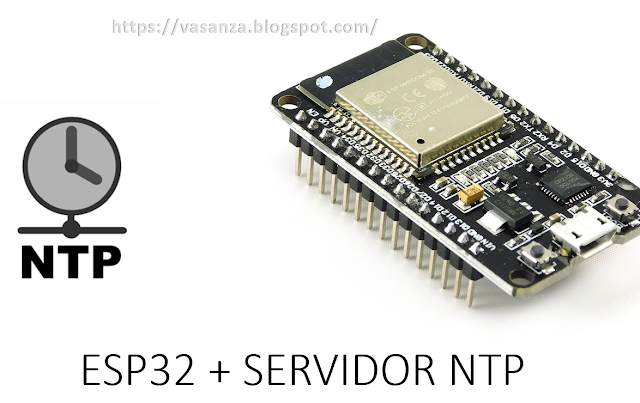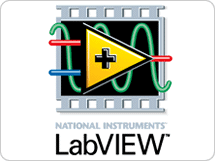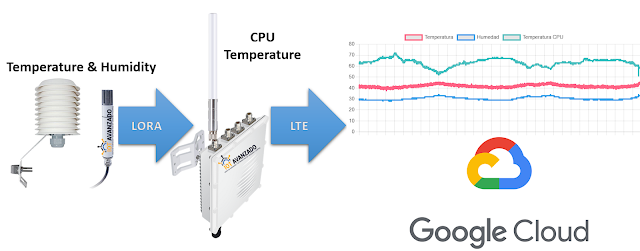▷ Classification of Subjects with Parkinson's Disease using Finger Tapping Dataset
- ✅ #Parkinson #ParkinsonDisease #PD #FingerTapping #Physionet
- ➡️ #Classification #NaiveBayes #MLP #RandomForest #ExtraTrees #LogisticRegression #RidgeClassifier #SVM #GradientBoostingClassifier #LGBM
- ➡️ BMS2021: 11th IFAC Symposium on Biological and Medical Systems #BMS2021
- ➡️ When using this resource, please cite the original publication:
- ✅ Abstract:
- Parkinson’s disease is the second most common neurodegenerative disorder and affects more than 7 million people globally. In this work, we classify subjects with Parkinson’s disease using data from finger-tapping on a keyboard. We use a free database by Physionet with more than 9 million records, preprocessed to delete atypical data. In the feature extraction stage, we obtained 48 features. We use Google Colaboratory to train, validate, and test nine supervised learning algorithms that detect the disease. As a result, we achieve a degree of accuracy higher than 98%.
✅ Video of the talk:
✅ Conference content:
- ➡️ Introduction
✅ References:
- Abedin, M. M., Maniruzzaman, M., Ahmed, N. F., Ahammed, B., & Ali, M. (2019, December). Classification and prediction of parkinson disease: A machine learning approach. In International Conference Data Science and SDGs: Challenges, Opportunities and Realities.
- Asanza, V., Sanchez, G., Cajo, R., & Peláez, E. (2020, July). Behavioral signal processing with machine learning based on fpga. In International Conference on Systems and Information Sciences (pp. 196-207). Springer, Cham.
- Bhatti, D., Thompson, R., Hellman, A., Penke, C., Bertoni, J. M., & Torres‐Russotto, D. (2017). Smartphone apps provide a simple, accurate bedside screening tool for orthostatic tremor. Movement disorders clinical practice, 4(6), 852-857.
- Brown, E. G., & Goldman, S. M. (2020). Modulation of the microbiome in Parkinson’s disease: diet, drug, stool transplant, and beyond. Neurotherapeutics, 17(4), 1406-1417.
- Chen, Y., Zhu, G., Liu, D., Liu, Y., Yuan, T., Zhang, X., ... & Zhang, J. (2020). The morphology of thalamic subnuclei in Parkinson's disease and the effects of machine learning on disease diagnosis and clinical evaluation. Journal of the neurological sciences, 411, 116721.
- Chun, P. J., Izumi, S., & Yamane, T. (2021). Automatic detection method of cracks from concrete surface imagery using two‐step light gradient boosting machine. Computer‐Aided Civil and Infrastructure Engineering, 36(1), 61-72.
- Farahani, B., Firouzi, F., Chang, V., Badaroglu, M., Constant, N., & Mankodiya, K. (2018). Towards fog-driven IoT eHealth: Promises and challenges of IoT in medicine and healthcare. Future Generation Computer Systems, 78, 659-676.
- Germine, L., Strong, R. W., Singh, S., & Sliwinski, M. J. (2021). Toward dynamic phenotypes and the scalable measurement of human behavior. Neuropsychopharmacology, 46(1), 209-216.
- Goldberger, A. L., Amaral, L. A., Glass, L., Hausdorff, J. M., Ivanov, P. C., Mark, R. G., ... & Stanley, H. E. (2000). PhysioBank, PhysioToolkit, and PhysioNet: components of a new research resource for complex physiologic signals. circulation, 101(23), e215-e220.
- Hariharan, M., Polat, K., & Sindhu, R. (2014). A new hybrid intelligent system for accurate detection of Parkinson's disease. Computer methods and programs in biomedicine, 113(3), 904-913.
- Karabayir, I., Goldman, S. M., Pappu, S., & Akbilgic, O. (2020). Gradient boosting for Parkinson’s disease diagnosis from voice recordings. BMC Medical Informatics and Decision Making, 20(1), 1-7.
- Lau, A. Y., & Staccini, P. (2019). Artificial intelligence in health: new opportunities, challenges, and practical implications. Yearbook of medical informatics, 28(01), 174-178.
- Maccarrone, M. (2020). Missing pieces to the endocannabinoid puzzle. Trends in molecular medicine, 26(3), 263-272.
- Pereira, C. R., Pereira, D. R., Rosa, G. H., Albuquerque, V. H., Weber, S. A., Hook, C., & Papa, J. P. (2018). Handwritten dynamics assessment through convolutional neural networks: An application to Parkinson's disease identification. Artificial intelligence in medicine, 87, 67-77.
- Rodríguez-Cruz, A., Romo-Mancillas, A., Mendiola-Precoma, J., Escobar-Cabrera, J. E., García-Alcocer, G., & Berumen, L. C. (2020). Effect of valerenic acid on neuroinflammation in a MPTP-induced mouse model of Parkinson’s disease. IBRO reports, 8, 28-35.
- Sadek, R. M., Mohammed, S. A., Abunbehan, A. R. K., Ghattas, A. K. H. A., Badawi, M. R., Mortaja, M. N., ... & Abu-Naser, S. S. (2019). Parkinson's disease prediction using artificial neural network.
- Shah, S. A. A., Zhang, L., & Bais, A. (2020). Dynamical system based compact deep hybrid network for classification of Parkinson disease related EEG signals. Neural Networks, 130, 75-84.
- Shtar, G., Rokach, L., Shapira, B., Nissan, R., & Hershkovitz, A. (2021). Using machine learning to predict rehabilitation outcomes in postacute hip fracture patients. Archives of physical medicine and rehabilitation, 102(3), 386-394.
- Singh, A., Prakash, B. S., & Chandrasekaran, K. (2016, April). A comparison of linear discriminant analysis and ridge classifier on Twitter data. In 2016 International Conference on Computing, Communication and Automation (ICCCA) (pp. 133-138). IEEE.
- Sveinbjornsdottir, S. (2016). The clinical symptoms of Parkinson's disease. Journal of neurochemistry, 139, 318-324.
- Urcuqui, C., Castaño, Y., Delgado, J., Navarro, A., Diaz, J., Muñoz, B., & Orozco, J. (2018, September). Exploring Machine Learning to Analyze Parkinson's Disease Patients. In 2018 14th International Conference on Semantics, Knowledge and Grids (SKG) (pp. 160-166). IEEE.
- Váradi, C. (2020). Clinical features of Parkinson’s disease: the evolution of critical symptoms. Biology, 9(5), 103.
- Wang, T., Zhang, D., Wang, Z., Jia, J., Ni, H., & Zhou, X. (2015, August). Recognizing gait pattern of Parkinson's disease patients based on fine-grained movement function features. In 2015 IEEE 12th Intl Conf on Ubiquitous Intelligence and Computing and 2015 IEEE 12th Intl Conf on Autonomic and Trusted Computing and 2015 IEEE 15th Intl Conf on Scalable Computing and Communications and Its Associated Workshops (UIC-ATC-ScalCom) (pp. 1-10). IEEE.
- Wroge, T. J., Özkanca, Y., Demiroglu, C., Si, D., Atkins, D. C., & Ghomi, R. H. (2018, December). Parkinson’s disease diagnosis using machine learning and voice. In 2018 IEEE signal processing in medicine and biology symposium (SPMB) (pp. 1-7). IEEE.
Read related topics
- ✅ 2022: CHARLA #PUCESE Arduino Week - Hardware de Código Abierto TSC-LAB
- ✅ 2021: Charla #FIEC - #SSVEP_EEG Signal Classification based on #Emotiv EPOC #BCI and #RaspberryPi
- ✅ 2021 Paper: #BCI System using a Novel Processing Technique Based on Electrodes Selection for Hand #Prosthesis Control
- ✅ 2021 Paper: #SSVEP_EEG Signal Classification based on #Emotiv_EPOC #BCI and #RaspberryPi
- ✅ 2021: Charla #FIEC - A 3D-Printed #EEG based #Prosthetic #Arm
- ✅ 2020 Paper: Implementation of a Classification System of #EEG Signals Based on #FPGA
- ✅ 2019: Artificial Neural Network based #Accelerometer and #Gyroscope recognition for gesture communication (#InnovateFPGA)
- ✅ 2018 Paper: #EMG Signal Processing with Clustering Algorithms for Motor Gesture Tasks
- ✅ 2017 Paper: #EEG Signal Clustering for Motor and Imaginary Motor Tasks on Hands and Feet
- ✅ 2017 Paper: Supervised Pattern Recognition Techniques for Detecting Motor Intention of Lower Limbs in Subjects with Cerebral Palsy #CP
- ✅ 2016 Paper: Clustering of #EEG Occipital Signals using #K_means
- ✅ #EMG signal classification with Machine Learning #ML using #Matlab
- ✅ Epileptic seizure prediction with Machine Learning #ML using #Matlab
- ✅ #EEG signal classification with Machine Learning #ML using #Matlab
- ✅ Machine Learning #ML using #Matlab





























Comentarios
Publicar un comentario